Gravel Groupsets Buyer's Guide: SRAM XPLR vs Shimano GRX vs Campagnolo Ekar
Which component group is best for riding and racing gravel?
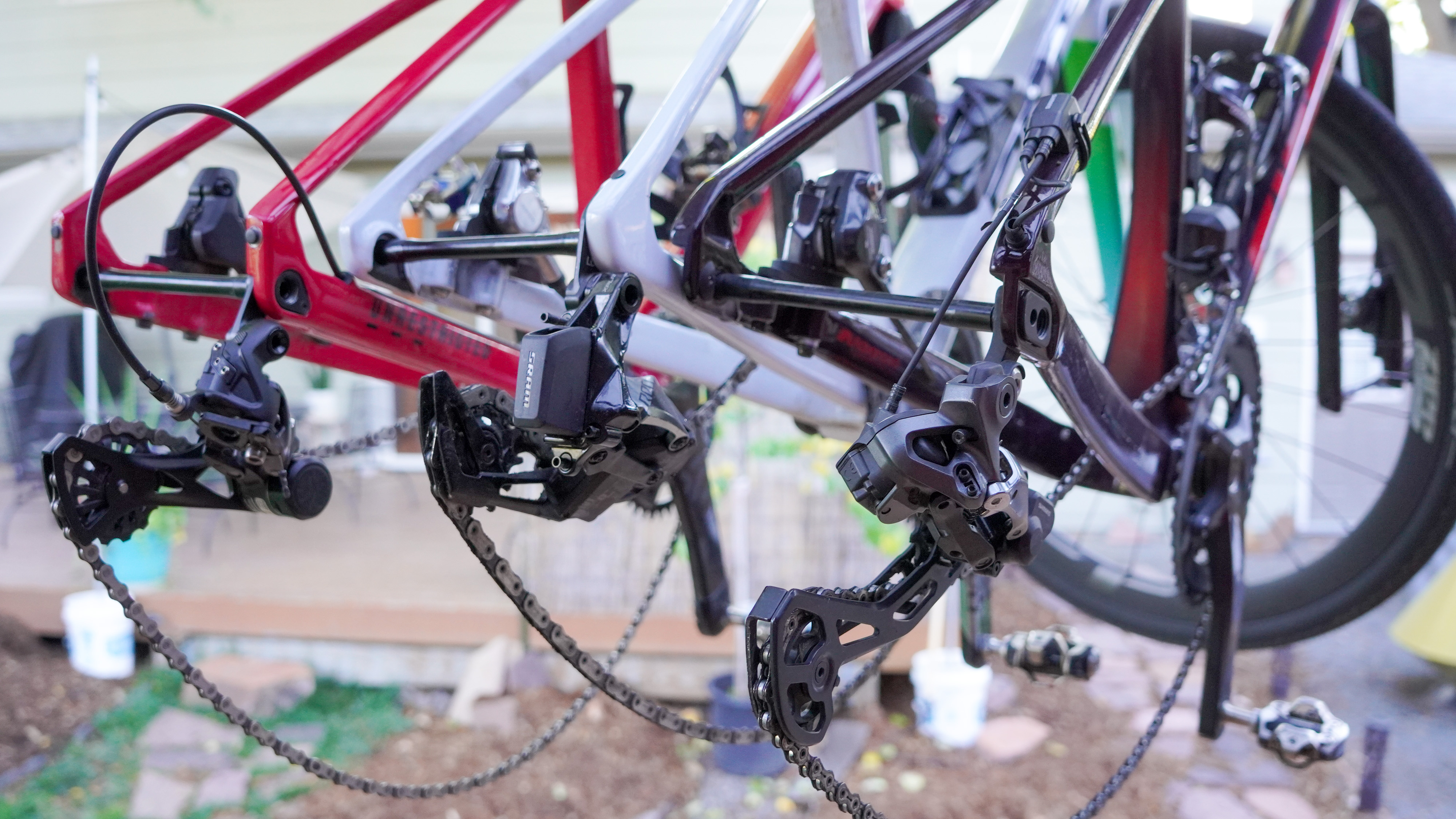

In addition to the slew of gravel bikes on the market, riders now have three good choices for gravel-specific component groups with offerings from SRAM, Shimano and Campagnolo. Here we look at the differences in terms of gearing, braking, ergonomics, maintenance, and availability, and we explore the positives and negatives of each family of gravel groups.
What is best for you depends largely on budget, riding terrain, and personal ergonomic preference.
What’s a gravel groupset?

Just like on road bikes and mountain bikes, groupsets consist of shifters, brakes, a derailleur or derailleurs, cranks, a cassette, and a chain.
And just like gravel bikes sit halfway between road and mountain, gravel groups in many ways are a hybrid of the road and mountain groups, and in many cases can or do incorporate pieces from each like shifters, brakes, or cassettes.
Gravel groups are optimized for long-distance off-road riding with things like clutch rear derailleurs that keep your chain taut (an MTB trickle down) and road-style integrated brake/shift levers.
Gravel Groupsets Gearing: 10- to 13-speed, and mechanical vs electric
Campagnolo’s Ekar gravel group is a 1x 13-speed mechanical group, meaning that there is only a single front chain ring, 13 rear gears on the cassette, and shifting is actuated with a cable, the way bikes have been shifted for decades.
Shimano and SRAM have more configuration options.
Get The Leadout Newsletter
The latest race content, interviews, features, reviews and expert buying guides, direct to your inbox!
SRAM’s XPLR gravel groups shift electronically, instead of using cables. There are 1x and 2x options for chain rings, and the cassettes are all 12-speed. There are three cost tiers: Red is the most expensive, Rival is the cheapest, and Force is the middle option.
Shimano GRX gravel groups come in both electric (11-speed and more expensive) and mechanical (11- and 10-speed, each progressively less expensive) options. GRX also has 1x and 2x options for all tiers.
Gravel Groupsets Braking: oil and pad types
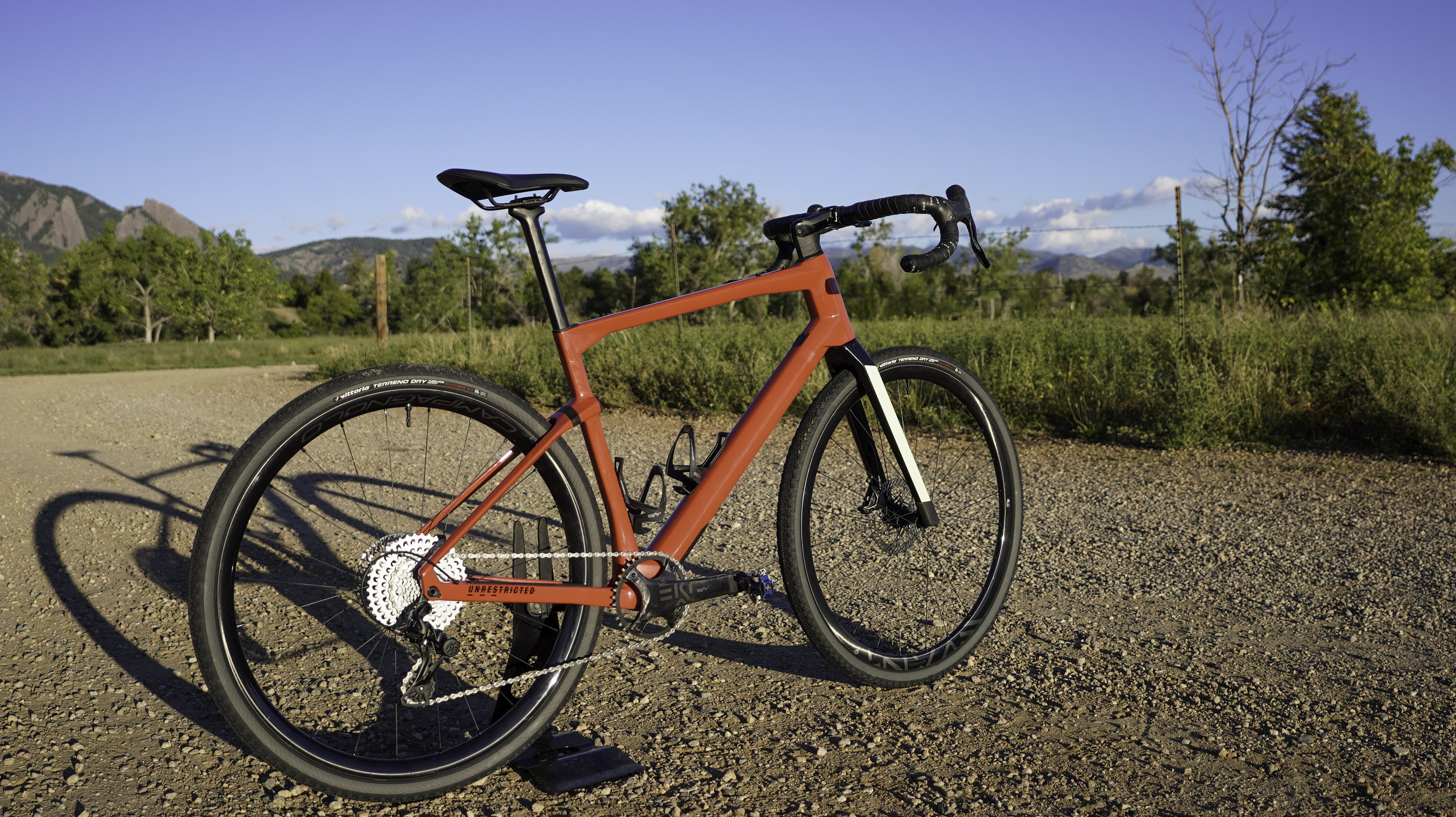
Campagnolo Ekar
All three companies use hydraulic disc braking. In addition to the superior braking characteristic of discs vs rim brakes, the move to discs from rim brakes allowed bike companies to put on bigger tires — a critical component of gravel bikes.
Campagnolo and Shimano use mineral oil in their hydraulic lines, while SRAM uses DOT fluid. All three come with organic brake pads, but metal pads are an option for longer wear.
Gravel Groupsets Gear range: Campy for the win, but it’s complicated…
Gearing is a can of worms. As riders, many of us want a lot of things when it comes to our gears. We want a wide range so we can creep up steep hills and power down hills. We want small steps between gears so our cadence doesn’t make big jumps. And we want minimal weight on our bike and minimal visual and mechanical complexity. We can’t have it all.
Many gravel bikes have 1x drivetrains, which checks the visual and mechanical simplicity boxes. Depending on where you live and where you like to ride (read: pancake flat or Alpine steeps), what “good” is will vary. Flatlanders (or really strong riders) will need less range. Those who ride mountains will likely want a larger range.
For stock 1x groups, Campagnolo has the best range with its 9-42t cassette, and nice, tight spacing with single-tooth steps between the smallest six cogs. Shimano GRX has the least range with its stock derailleur limiting the cassette to 11-42t.
For SRAM and Shimano, more range can be had with a so-called “mullet” set-up using a mountain bike derailleur and cassette, or by using a front derailleur.
Gear Chart:
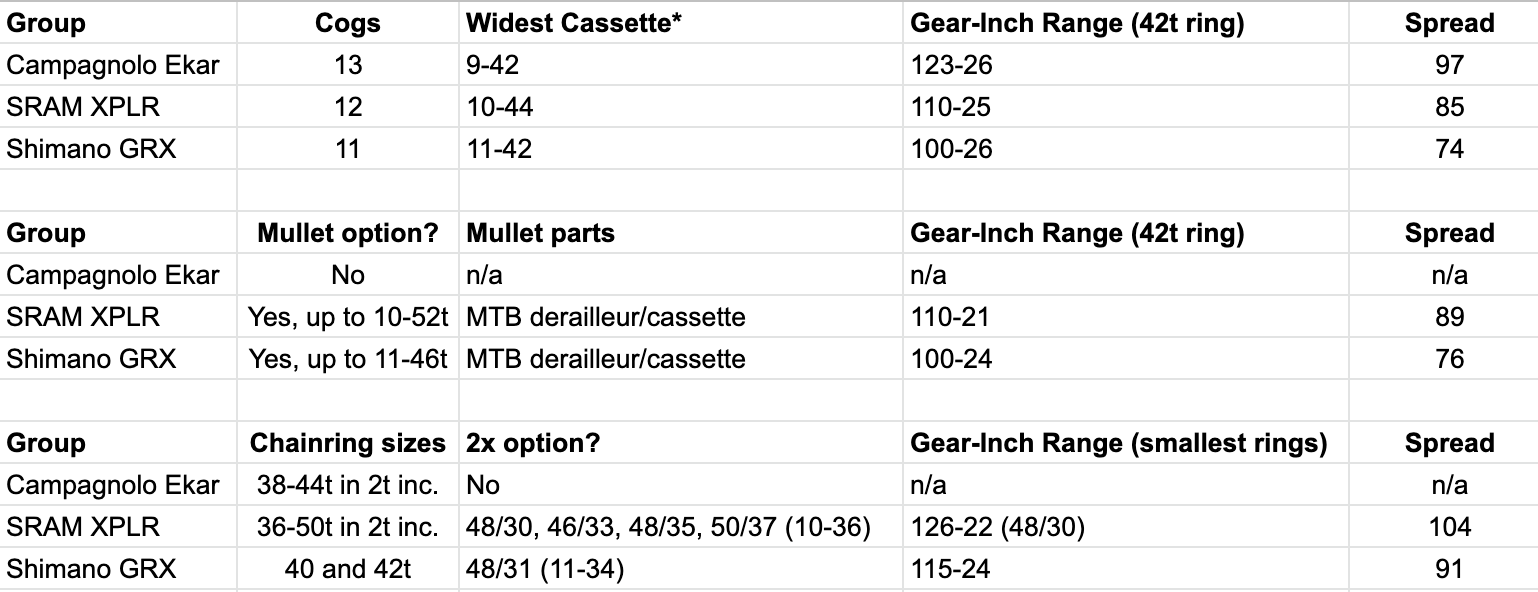
Power meter
If you want to use a power meter, only SRAM sells groups with a stock power-meter option with its Quarq brand. Stages and 4iiii sell power-meter options for GRX cranks. An Ekar power meter does not yet exist.
Gravel Groupsets Lever ergonomics: Get a feel before you buy!
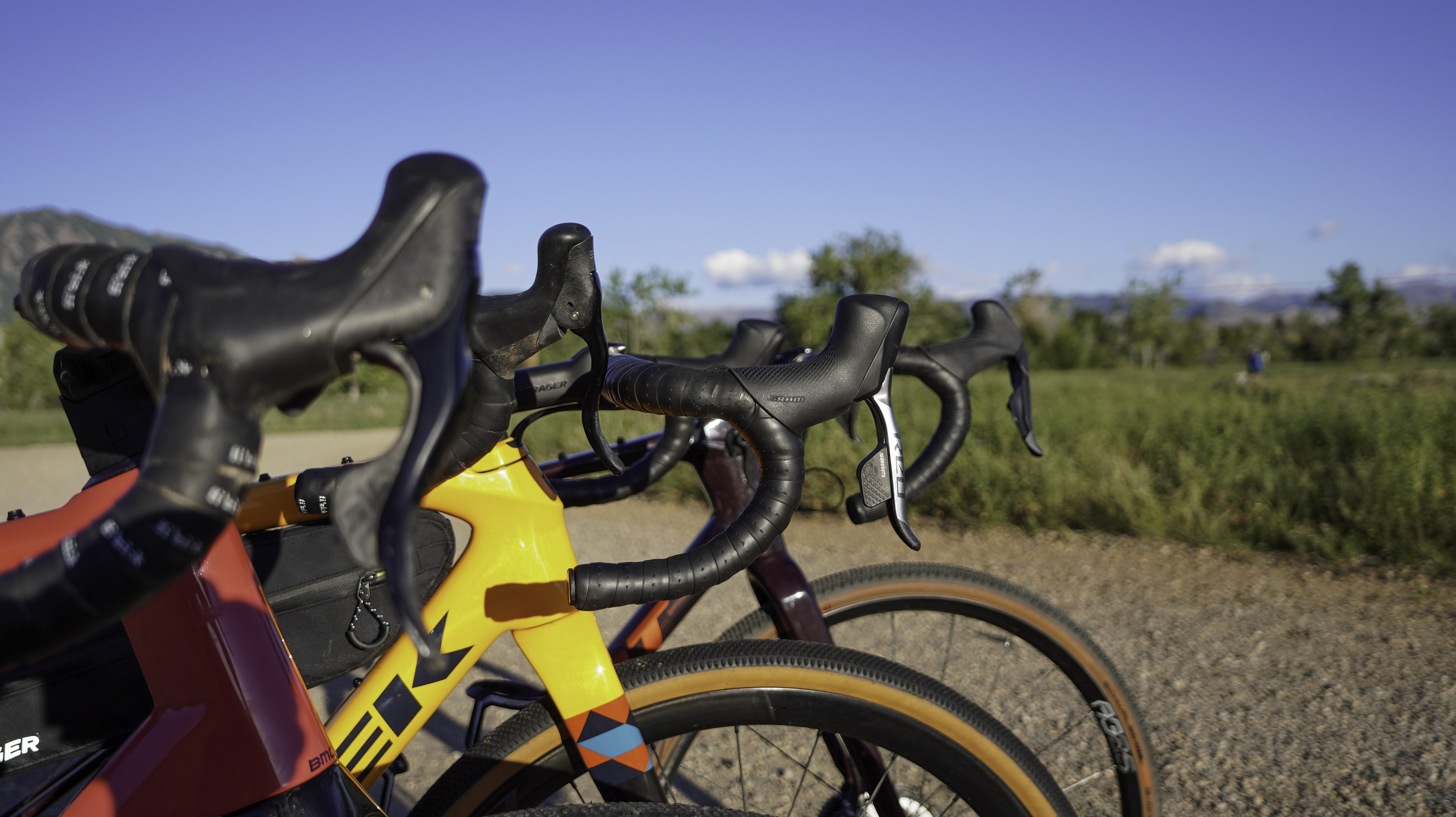
The hoods
Along with gearing, how the levers feel in your hands is of high importance. There are a few factors here. The basic shape of the hoods varies:
SRAM is smooth and flat;
Campy is a bit concave;
and Shimano is flat but with some ridges for traction that some riders find to be obtrusive.
Gravel Groupsets Shifting: To each, their own
All three shift differently.
SRAM is the simplest with the one button per lever; right makes it harder, left makes it easier, and pressing both if you have a 2x shifts the front derailleur (or a dropper post!).
For its electronic group, Shimano has two buttons per lever, mimicking its mechanical arrangement. You can program them however you like, but the stock arrangement is for the two right buttons to control the rear derailleur and the left buttons to control the front (or do nothing with a 1x).
Campagnolo uses its thumb lever to shift into a harder gear and the index lever to move into an easier gear. While Campy added an extension on the thumb lever to make it easier to reach from the drops, it’s still the least ergonomic option of the three.
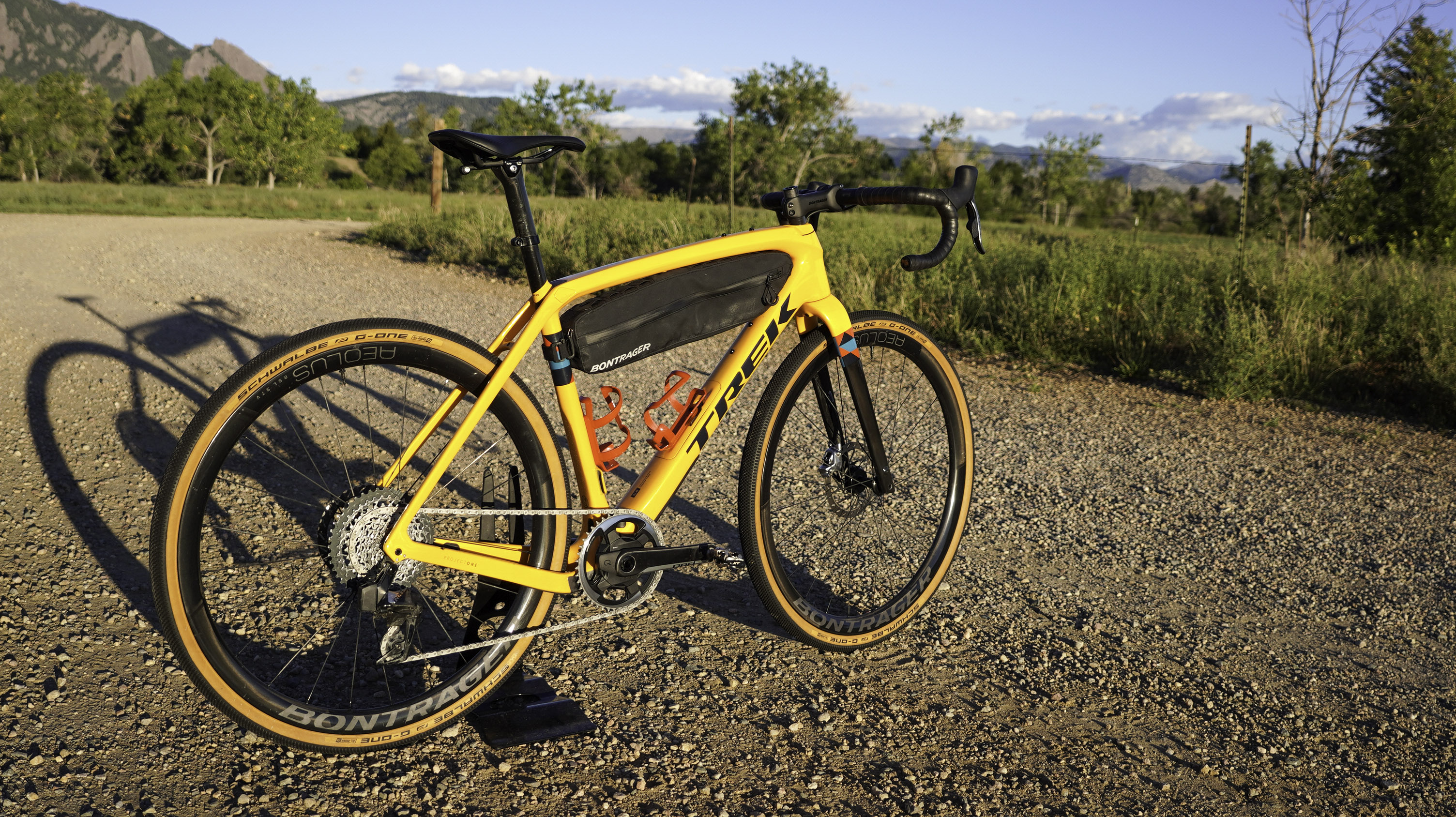
SRAM XPLR
Gravel Groupsets Maintenance: batteries vs cable
All three groupsets require maintenance.
With Ekar and the mechanical Shimano drivetrains, the cable will stretch and require you to tweak the barrel adjuster to keep the bike shifting smoothly.
With SRAM and Shimano’s electronic groups, the derailleur won’t go out of alignment (unless you crash), but you do need to remember to charge your battery, or it won’t shift at all!
The SRAM battery has a much shorter life (on the scale of weeks), but pops off easily to recharge. The internal Shimano battery lasts for months, but requires a more fiddly recharge with a dedicated cable.
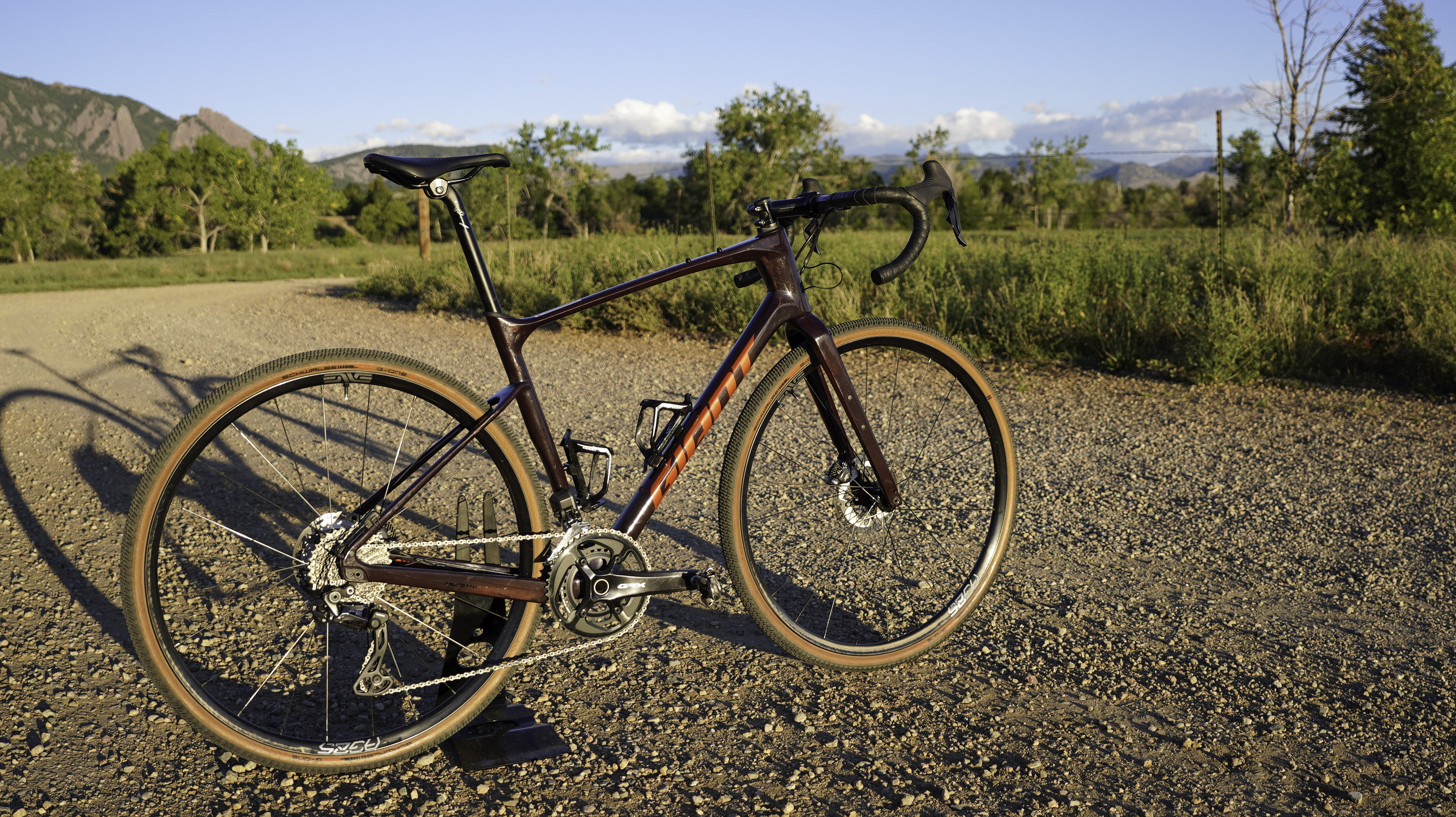
Shimano GRX
Gravel Groupsets Availability: Well, it depends…
Shimano and SRAM come on a vastly greater number of bikes than Campagnolo Ekar, especially in North America.
While the supply chain has largely caught up with demand after two years of Covid-related shortages, you may not be able to get your bike or group of choice immediately.

Thank you for reading 20 articles this month* Join now for unlimited access
Enjoy your first month for just £1 / $1 / €1
*Read 5 free articles per month without a subscription

Join now for unlimited access
Try first month for just £1 / $1 / €1

Ben Delaney has been working in cycling media since 2000, covering pro racing, tech, training, and even the business side of things at a trade publication. In a fit of early mid-life crisis, he temporarily left journalism and went to work at Specialized for a hot minute, where he and Mark Cote cooked up #AeroIsEverything. Don't hate him. After making fun of gravel in its early days, he's now all in as an evangelist for the sport, so don't get him started. But do go check out his new YouTube Channel, The Ride with Ben Delaney.
-
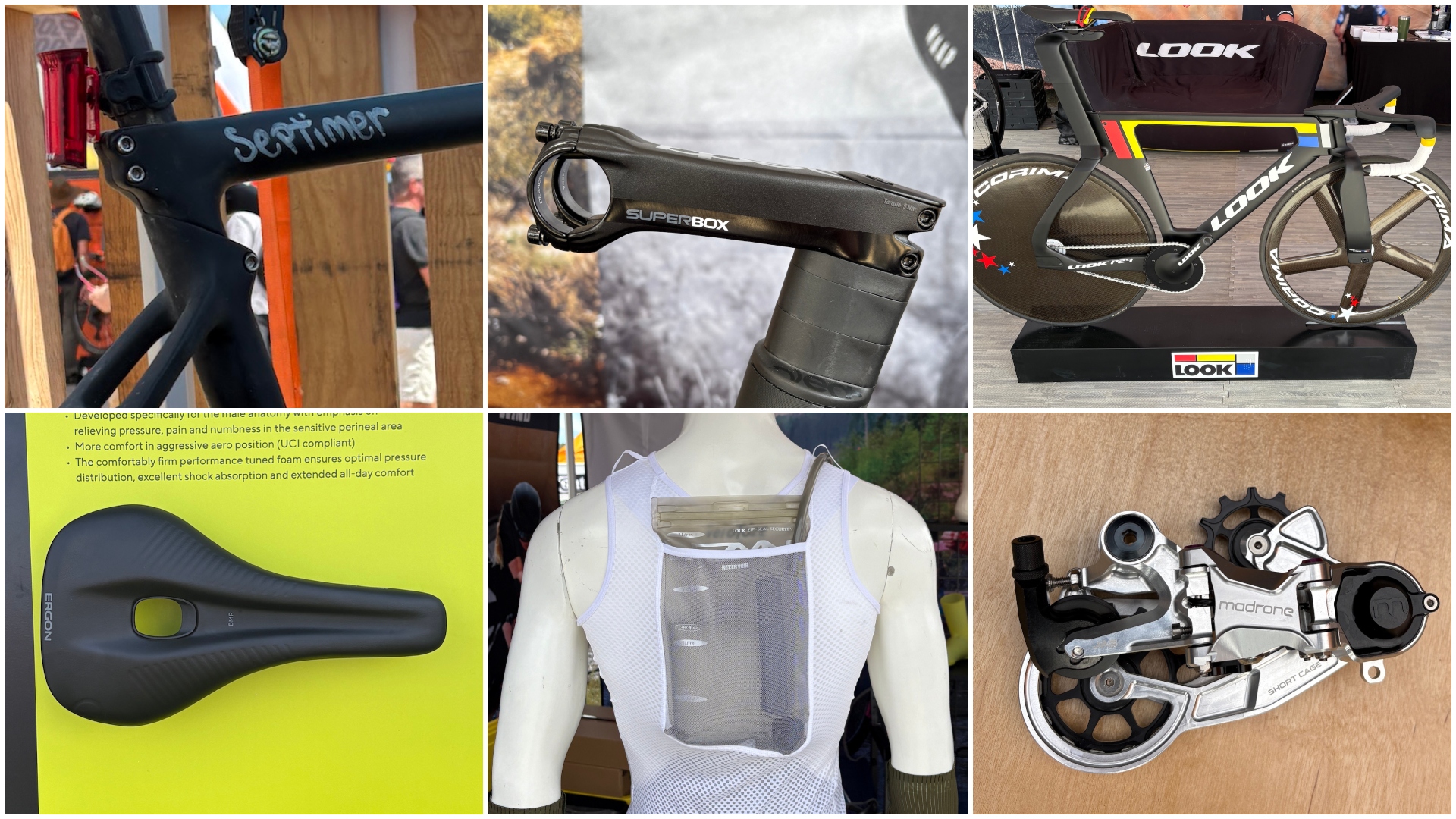 The Sea Otter Classic: sights and sounds from the biggest bike gathering in North America - Part 1
The Sea Otter Classic: sights and sounds from the biggest bike gathering in North America - Part 1Odds and ends that run the gamut, from a $13,000 frameset to armoured kit and new hydro-vests
By Tyler Boucher Published
-
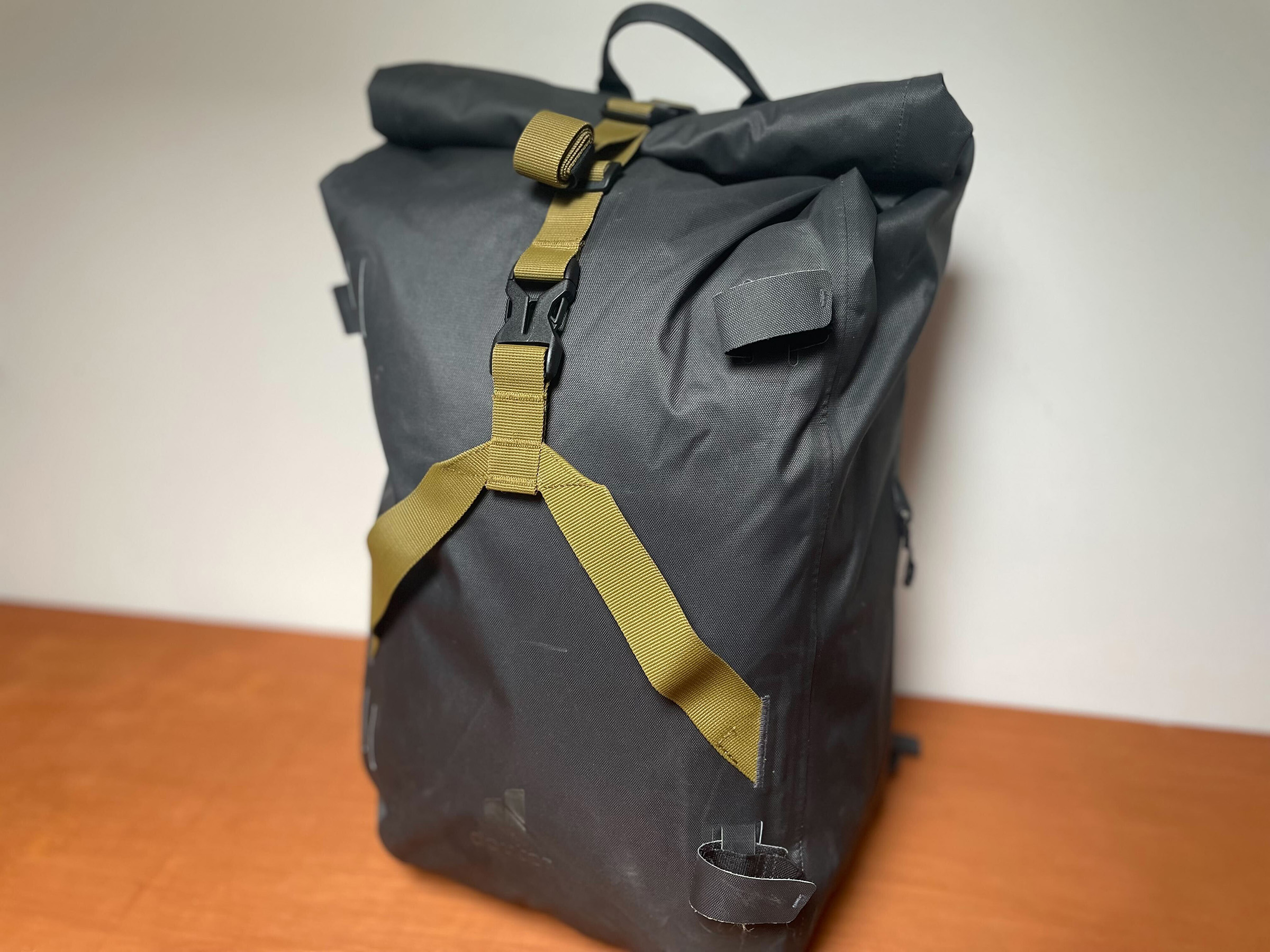 Deuter's 30ltr commuter backpack
Deuter's 30ltr commuter backpackA rolltop bag to fit a change of clothes and a sandwich. And keep them dry
By Simon Richardson Published
-
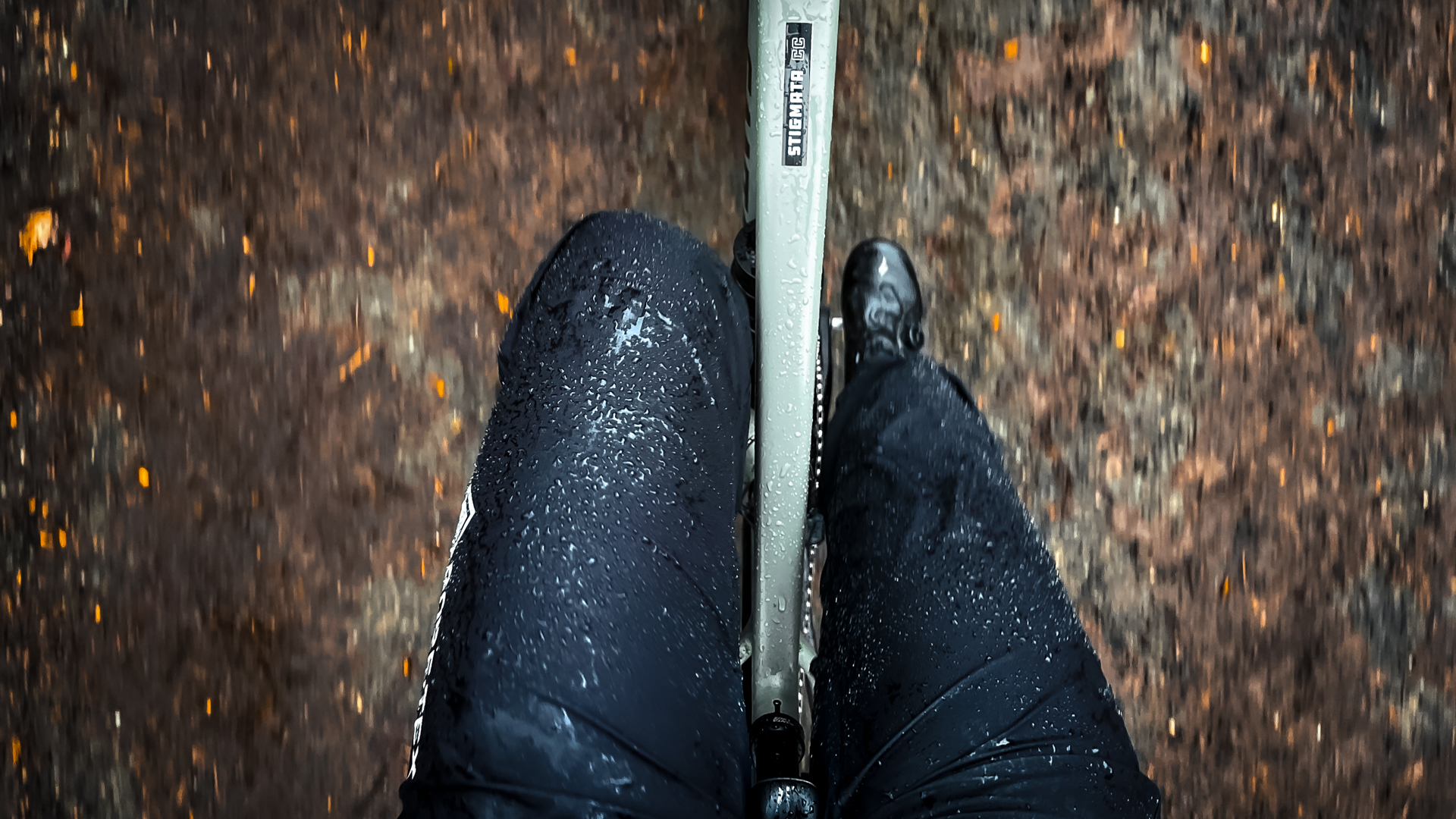 These Gorewear Endure GORE-TEX Pants are the best rain pants I’ve found for surviving a winter of riding in the Pacific NorthWET
These Gorewear Endure GORE-TEX Pants are the best rain pants I’ve found for surviving a winter of riding in the Pacific NorthWETBecause sometimes, lycra—insulated or not—just isn’t enough
By Anne-Marije Rook Published
-
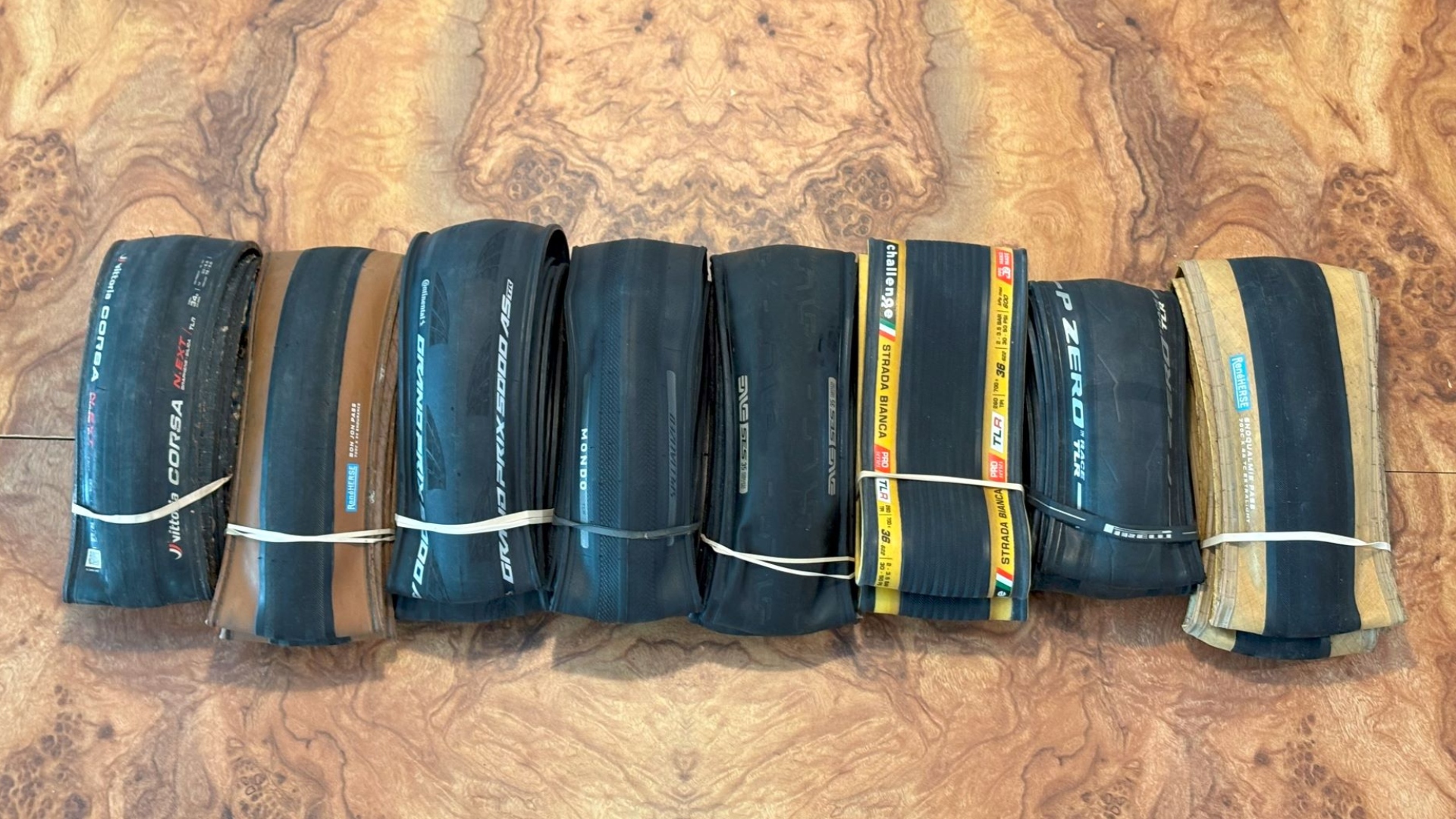 Forget 28mm tyres: The rise of wider road bike tyres is here, and if you ride your gravel or all-road bike on the road, pay attention
Forget 28mm tyres: The rise of wider road bike tyres is here, and if you ride your gravel or all-road bike on the road, pay attentionAs bikes get more capable, there is a compelling case that road riding is better with wider rubber
By Logan Jones-Wilkins Published
-
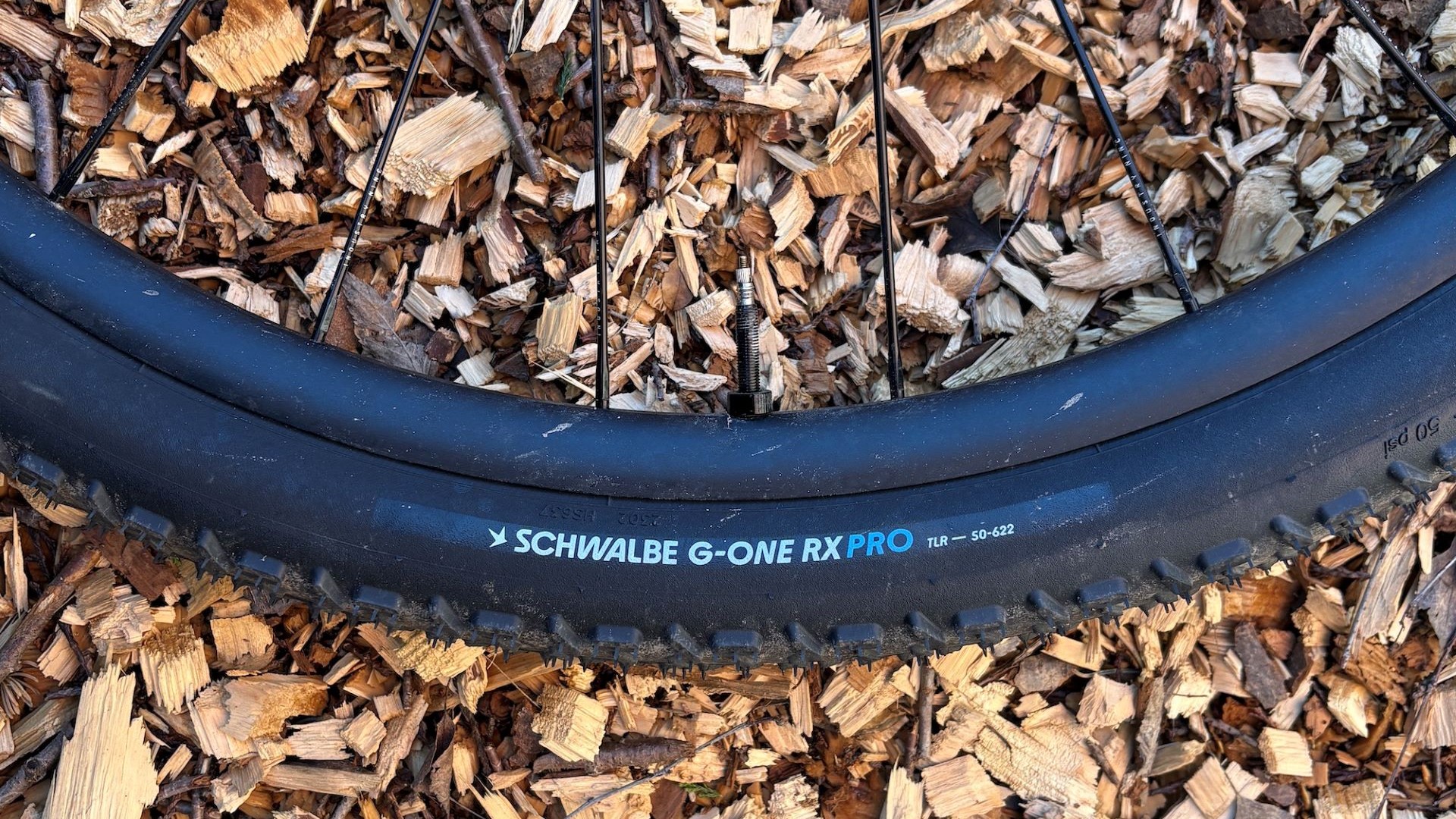 Size matters — but so does the casing: a Schwalbe G-One RX Pro gravel tyre review
Size matters — but so does the casing: a Schwalbe G-One RX Pro gravel tyre reviewA modern gravel tyre for rough conditions, available in a variety of widths, that performs flawlessly
By Tyler Boucher Published
-
 Shimano 12-speed GRX Di2 long-term review: 2x shifting for off-road riding isn’t dead after all
Shimano 12-speed GRX Di2 long-term review: 2x shifting for off-road riding isn’t dead after allThanks to Shimano’s latest Di2 groupset, I’ve come to appreciate the benefits of 2x shifting all over again—even if Shimano plays it a bit too safe
By Anne-Marije Rook Published
-
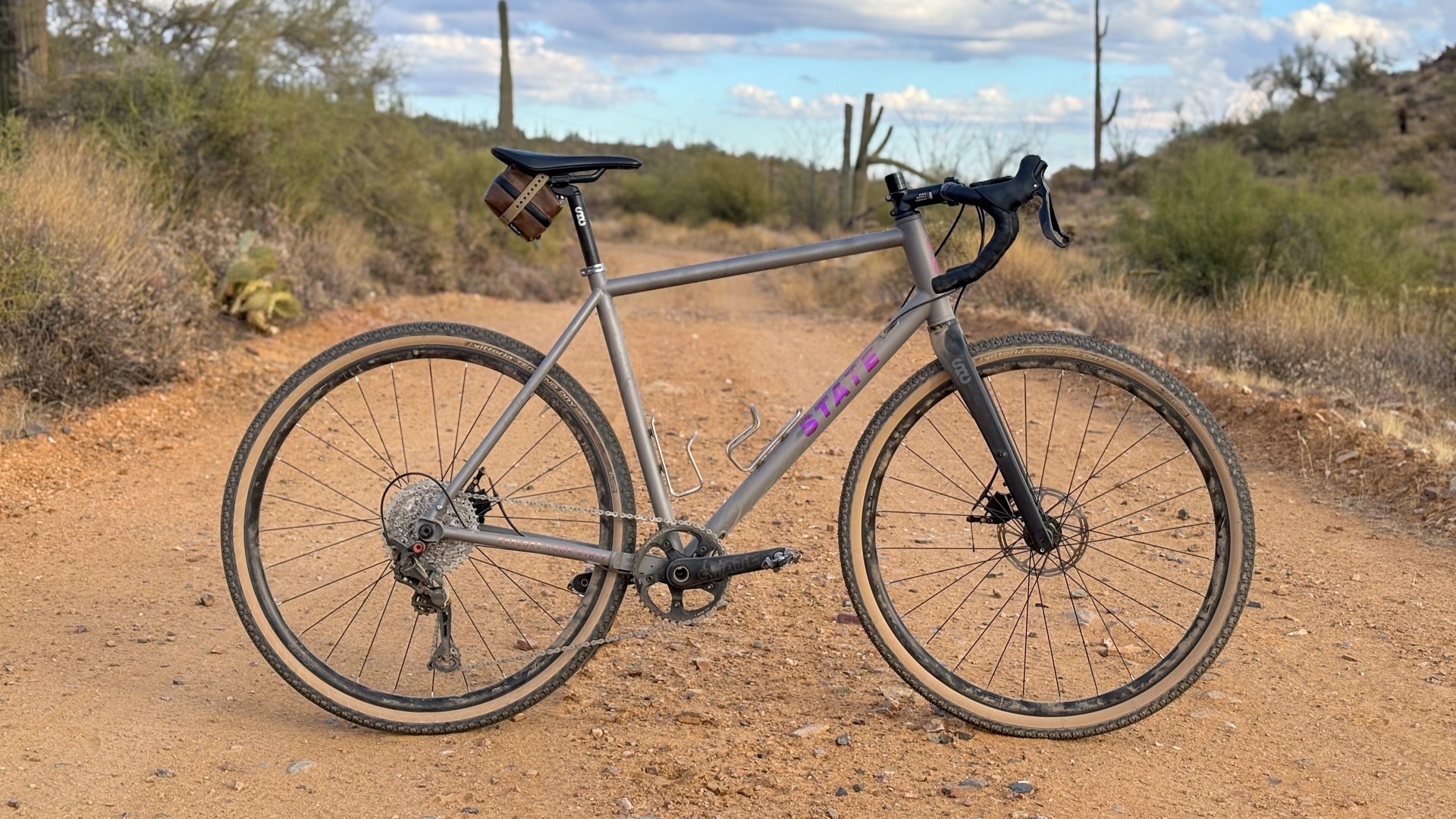 The State Titanium All-Road is an admirable but flawed attempt to build a titanium gravel bike for the masses
The State Titanium All-Road is an admirable but flawed attempt to build a titanium gravel bike for the massesA titanium frame at budget pricing is a great step, but does a premium frame material matter if the bike's componentry holds it back?
By Logan Jones-Wilkins Published
-
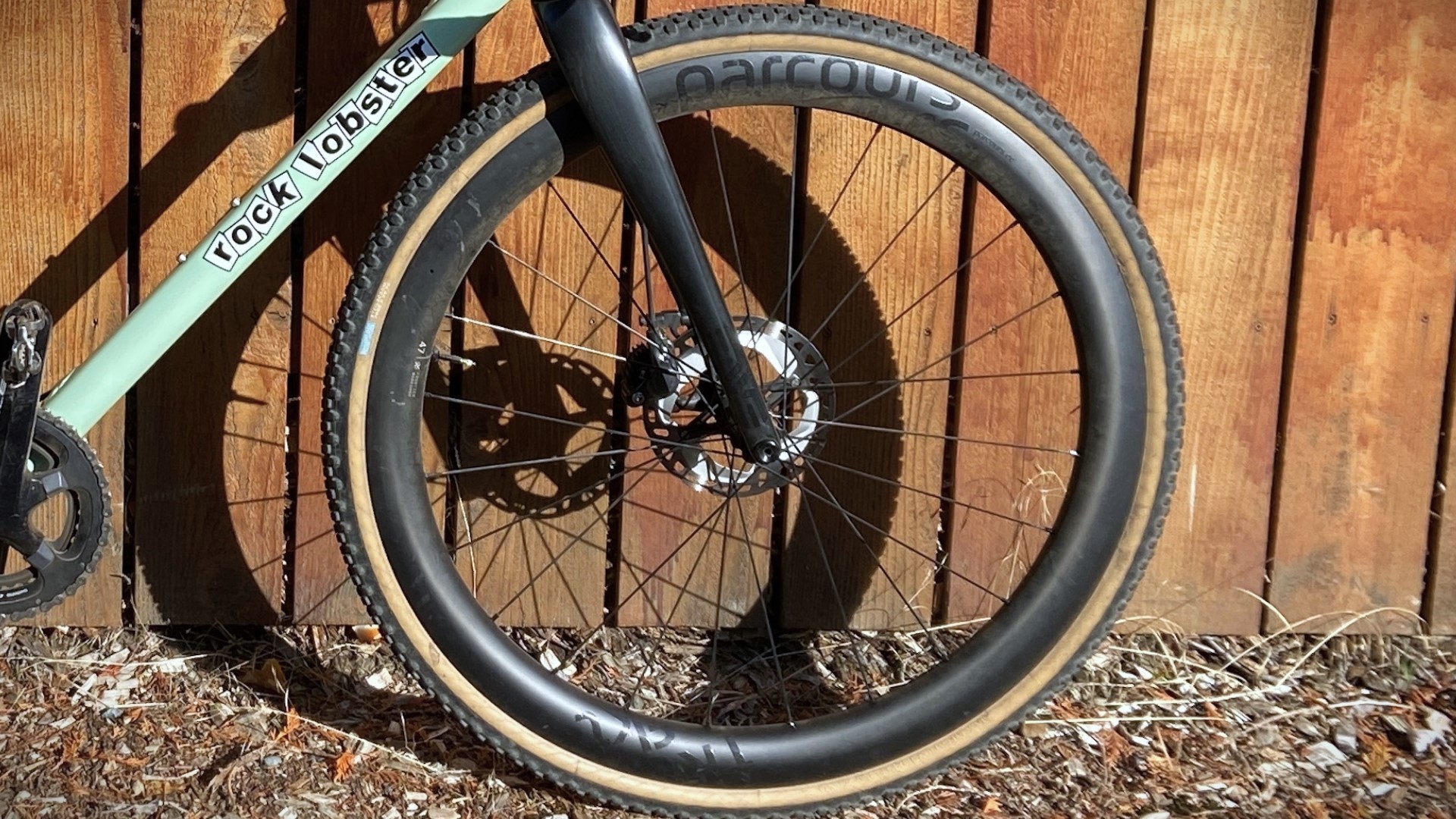 Parcours FKT Wheelset Reviewed: Affordable, meet wide
Parcours FKT Wheelset Reviewed: Affordable, meet wideParcours, whose stated mission is making aerodynamics more accessible, set out to make a faster gravel wheel. The superwide FKT is the result
By Tyler Boucher Published
-
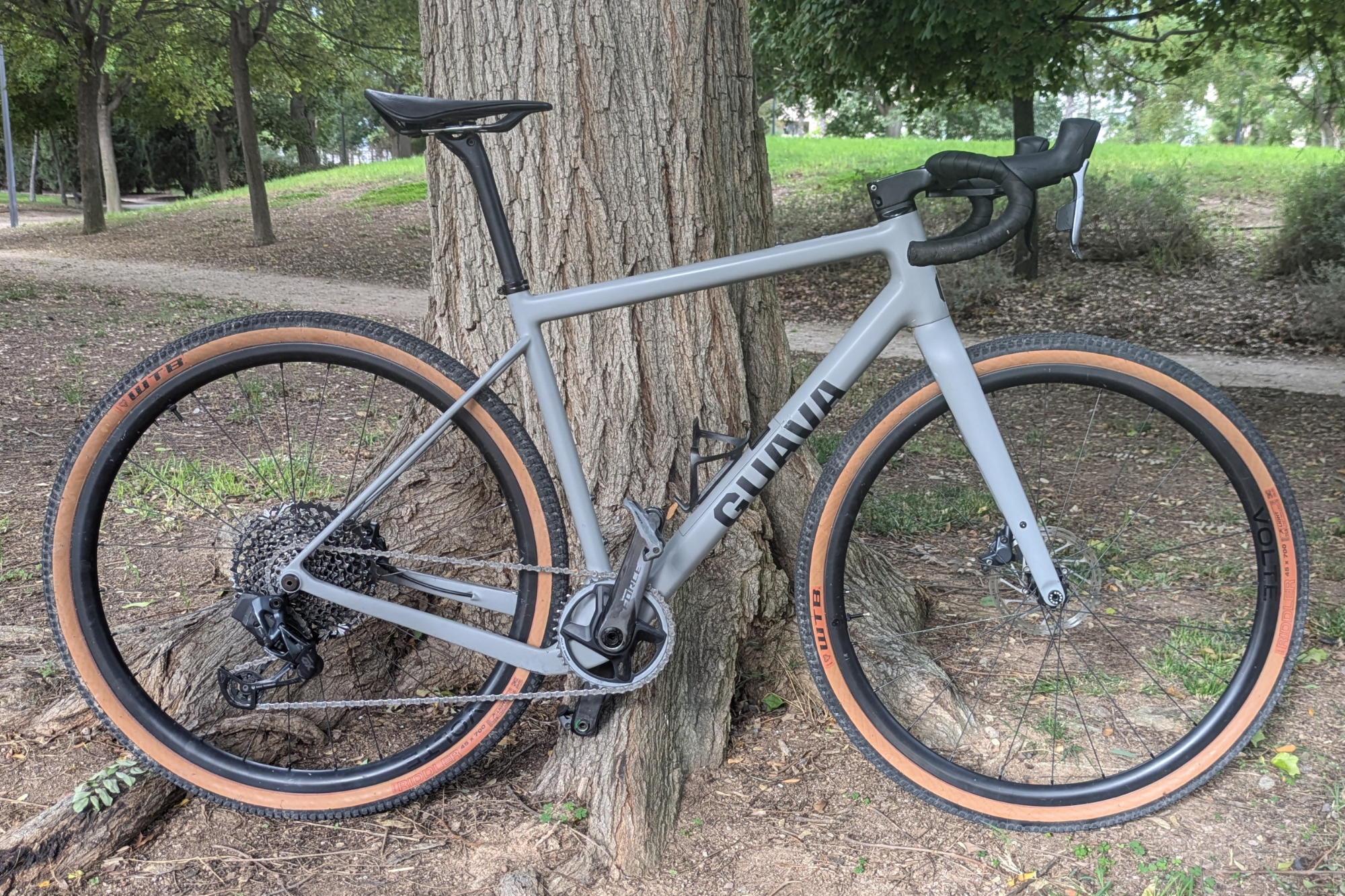 Guava Spot Force AXS review: the Catalan gravel bike that loves tarmac too
Guava Spot Force AXS review: the Catalan gravel bike that loves tarmac tooIt just doesn’t deal with fast asphalt, rocky terrain, sandy stretches and damp conditions, but it excels across them. It’s fast, aggressive, nimble, stable, and above all compliant.
By Chris Marshall-Bell Published
-
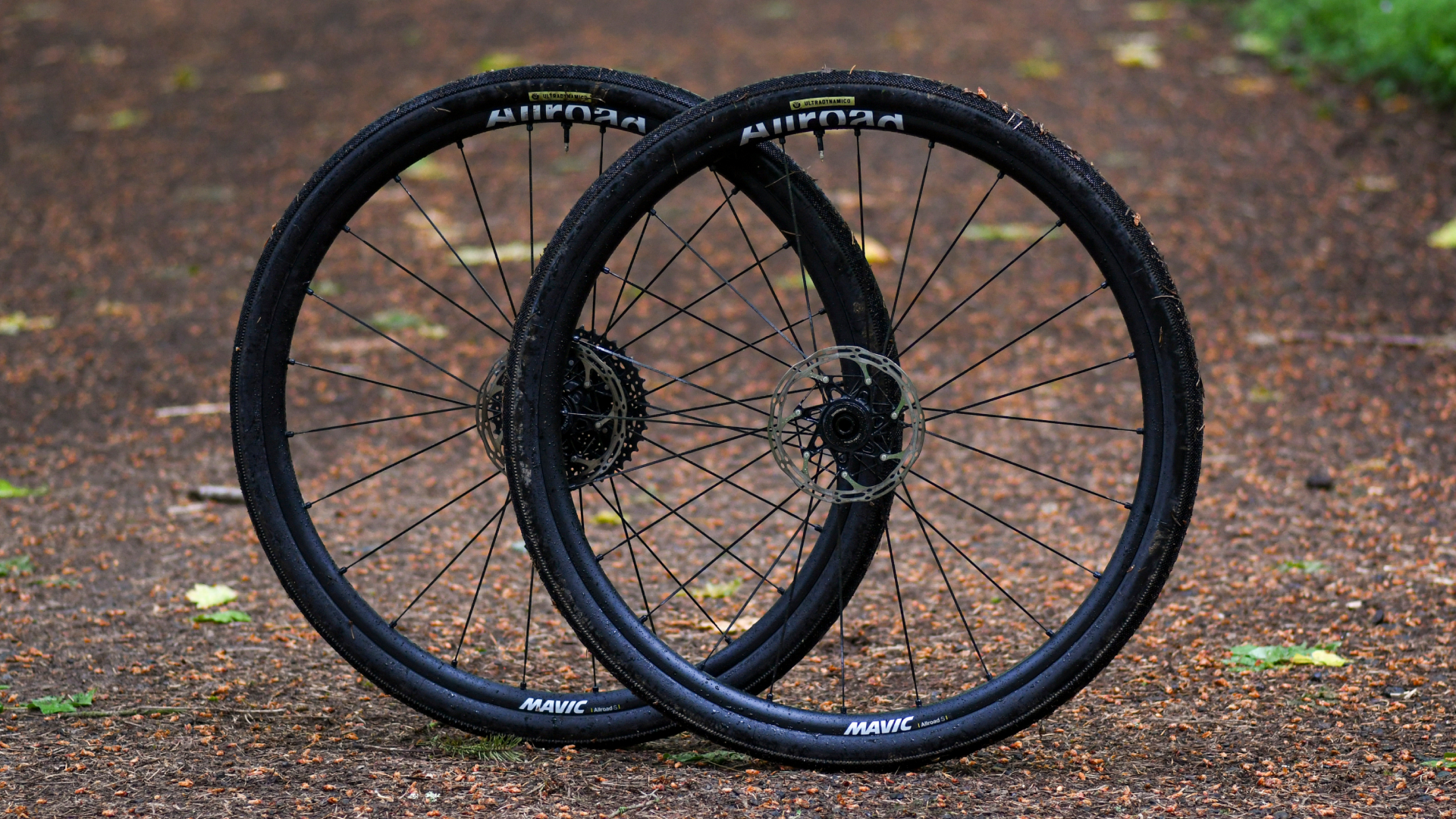 Mavic's latest foray into gravel impresses: the AllRoad S wheelset is stiff, tapeless and robust
Mavic's latest foray into gravel impresses: the AllRoad S wheelset is stiff, tapeless and robustWe review Mavic's new AllRoad S aluminium wheelset
By Charlie Kohlmeier Published